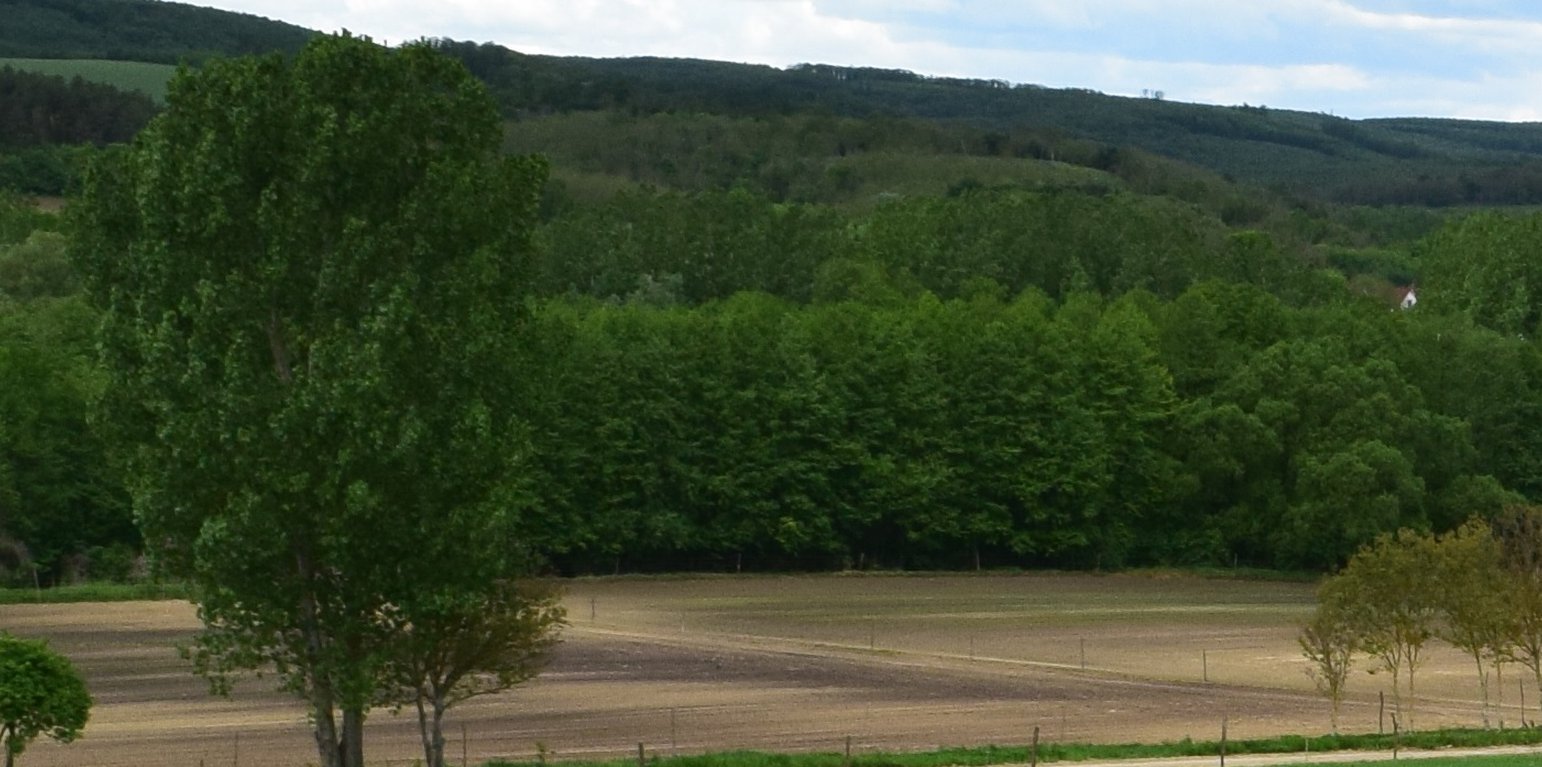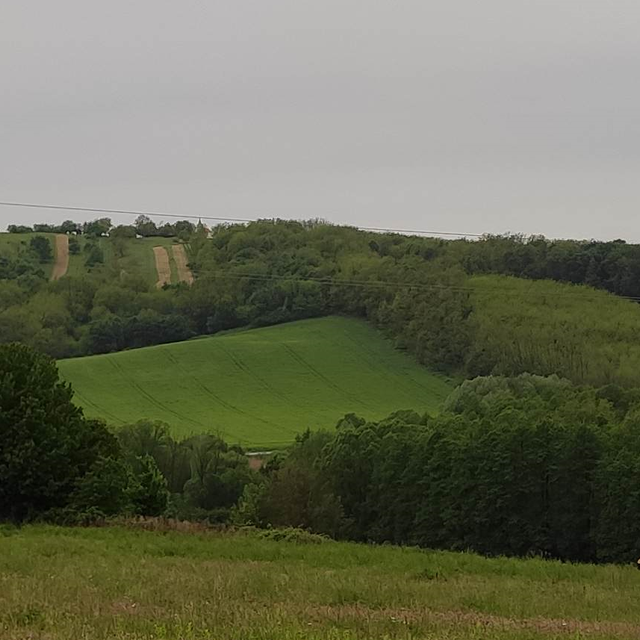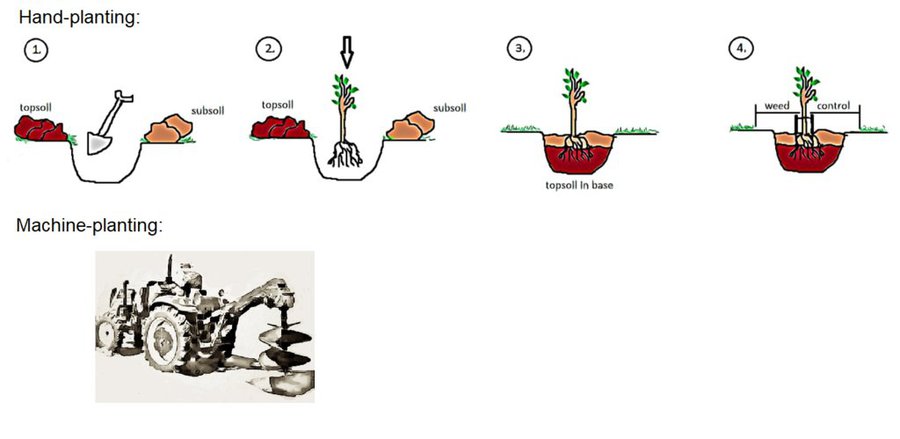



Afforestation is planting trees on previously non-forested land. Trees hold the soil and reduce runoff, and thus prevent erosion of the most fertile layers. It is an effective way to rehabilitate degraded lands, being a nature-based solution which addresses floods and soil erosion. As vegetation cover plays a crucial role in erosion and runoff rates, afforestation is considered among the best options for soil conservation. Water-related forest ecosystem services include the provision, filtration and regulation of water, along with stream ecosystem support and water-related hazard control, for example soil protection from runoff and erosion. In this context, forest management practices that involve vegetation cover modifications may have a substantial impact on the provision of water-related ecosystem services. Moreover, forest ecosystem interactions with water and energy cycles have been highlighted as the foundations for carbon storage, water resources distribution and terrestrial temperature balancing. Forest management may thus play a key role in meeting climate change mitigation goals as well (Rodrigues et al. 2020).
Afforestation is recommended in areas affected by severe erosion, especially where the slope exceeds 17% and deep gully erosion occurs. This can be a whole parcel or only a part of it. Planting mixed forest consisting of indigenous tree species is the most advantageous.
The main steps in planting/ maintaining trees are as follows:
•Site preparation: considerations include the most effective and cost-efficient methods; soil type, existing vegetation, time and financial constraints.
•Planting: machine-planting or hand-planting.
•Follow-up: monitoring survival, continuing control of competing vegetation, providing protection from animal damage, and monitoring for disease and insects.
•Harvesting/thinning: removing individual trees to reduce the woodland density. Through removing poorer quality trees, the stronger thrive.
Although the long-term environmental benefits of afforestation are significant, farmers generally do not like participating in afforestation programmes because it means a significant loss of income in the short/mid-term (even with the available subsidies/agricultural support).

Lieu: The site where the technology is applied is situated within the catchment of Felső-Válicka stream, which belongs to the Balaton catchment area in western Hungary., Zala County, Hongrie
Nbr de sites de la Technologie analysés: 2-10 sites
Diffusion de la Technologie: répartie uniformément sur une zone (approx. 0,1-1 km2)
Dans des zones protégées en permanence ?: Non
Date de mise en oeuvre: il y a entre 10-50 ans
Type d'introduction







| Spécifiez les intrants | Unité | Quantité | Coûts par unité (dollars américains) | Coût total par intrant (dollars américains) | % des coût supporté par les exploitants des terres |
| Main d'œuvre | |||||
| soil preparation | person day | 2,0 | 50,0 | 100,0 | 100,0 |
| planting (4000 seedlings on 1 hectare) | person day | 3,0 | 50,0 | 150,0 | 100,0 |
| wild fence construction | person day | 4,0 | 50,0 | 200,0 | 100,0 |
| Equipements | |||||
| soil preparation | hiring cost/day | 1,0 | 400,0 | 400,0 | 100,0 |
| planting | hiring cost/day | 1,0 | 100,0 | 100,0 | 100,0 |
| wild fence construction | hiring cost/day | 2,0 | 100,0 | 200,0 | 100,0 |
| Matériel végétal | |||||
| seedlings | piece | 4000,0 | 0,1 | 400,0 | 100,0 |
| Matériaux de construction | |||||
| wild fence raw material | meter | 400,0 | 2,5 | 1000,0 | 100,0 |
| Autre | |||||
| approval process (planning and obtaining permit) | per case | 1,0 | 400,0 | 400,0 | 100,0 |
| Coût total de mise en place de la Technologie | 2'950.0 | ||||
| Coût total de mise en place de la Technologie en dollars américains (USD) | 2'950.0 | ||||
| Spécifiez les intrants | Unité | Quantité | Coûts par unité (dollars américains) | Coût total par intrant (dollars américains) | % des coût supporté par les exploitants des terres |
| Main d'œuvre | |||||
| Tillage/mechanical weeding | person day | 1,0 | 50,0 | 50,0 | 100,0 |
| Equipements | |||||
| Tillage/mechanical weeding- machine hiring cost | hiring cost/day | 1,0 | 300,0 | 300,0 | 100,0 |
| Coût total d'entretien de la Technologie | 350.0 | ||||
| Coût total d'entretien de la Technologie en dollars américains (USD) | 350.0 | ||||
Crop production is not possible in afforested areas, but financial support is available to compensate for the loss of income
Wood production for industrial or energy purposes is possible in an afforested area, which also generates significant income
Farm income may decrease but financial compensatory supports are available in the afforestation programs.
As trees have a larger leaf area, surface roughness and deeper rooting systems than grassland or cropland, afforestation could usually result in reduced soil moisture content.
The density of the vegetation cover greatly influences the degree of soil loss reduction
Especially under coniferous forests soil acidity increases, but this only matters if cropland use would be planned again on the area in the future
Under trees reduced solar radiation, a more moderate temperature regime, higher humidity can be observed.
Trees as physical barriers can significantly decrease wind erosion